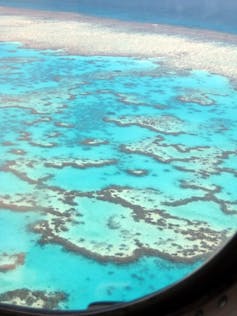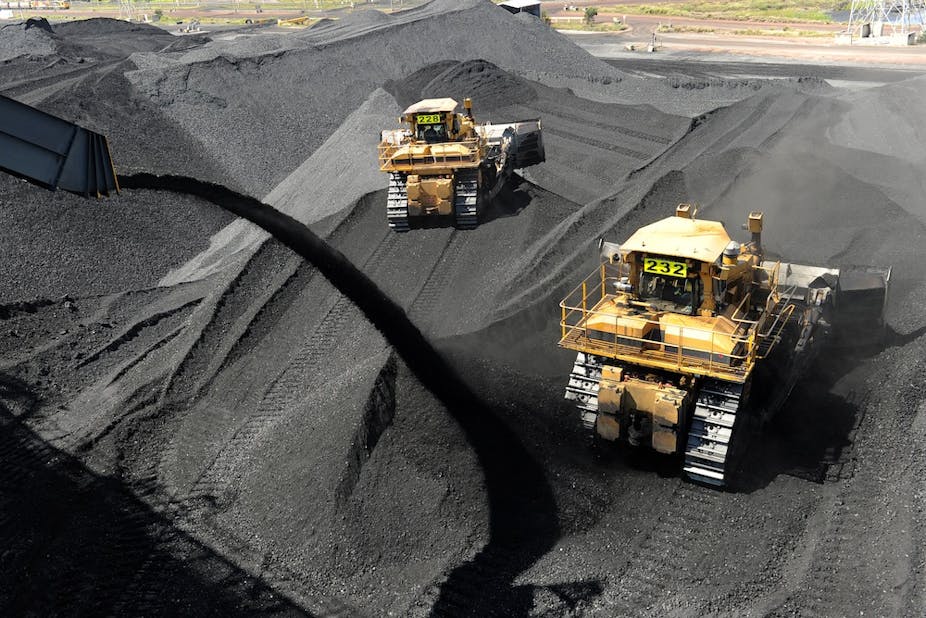Australia is in the midst of a structural economic change with the mining boom coming to an end as investment in the sector falls. Tourism has been promoted by government as a key source of future economic growth, with some media reports already stating that tourism has started to recover. But will it really be that easy to shift back from a resource-dependent to a tourism-led economy?
Tourism and the resources sector have cyclically been key exports and drivers of economic growth in Australia. However, the last decade’s mining boom has negatively impacted on the sector by inflating the exchange rate, increasing competition for labour and delivering a ‘two-speed’ economy.
During this boom, Australia’s resources sector has encroached on protected areas with iconic tourism attractions and protected areas, such as the Great Barrier Reef, increasing the risk of the region losing key assets that attract visitation. Importantly, the mining boom has heralded significant structural change in Australia’s economy, with little to no long-term planning for growth once it comes to an end.
A report by the Griffith Institute for Tourism has found that the transition back to tourism - particularly in regions that have become resource dependent - may be very difficult. Investigating two resource dependent regions in Queensland (Gladstone and Roma), the research found that the regions have become dependent on the resources sector and this has impacted tourism in many ways.
The key impacts of the boom in these regions include: reducing the tourism industry’s ability to attract and retain staff; increasing costs of accommodation, food and fuel for visitors and tourism employees; influencing tourism businesses to adapt to cater for the more lucrative resources sector workers (that is, installing dongas (portable buildings), building up-market motels, offering fine dining); reducing traditional tourism businesses profitability leading to their closure; and straining local infrastructure and support services upon which tourism depends.

The regions have reportedly suffered a decline in their aesthetics, reducing their appeal as tourism destinations. Combined with the busyness and limited amount of affordable accommodation, the traditional leisure markets now avoid or pass through the towns. In Gladstone the resources sector activity has also restricted visitor access to certain areas of the region and impacted on key natural assets that attract tourists, including the harbour and the Great Barrier Reef.
But probably the most concerning impact occurred in Roma, where there was a change in the strategic direction of the local council following the regional council amalgamations in 2008. Prior to the amalgamation, Roma was an example of regional tourism best practice, with a local tourism development officer working with the industry to develop products and market the region. Following the amalgamation, the council decided to grow the resources sector, which strengthened the sector’s capacity to do business in the region.
At the same time, the council struggled to understand and quantify the benefits of tourism, resulting in the revenue generated by tourism being viewed as inferior to the resources sector. The council’s shift in focus away from tourism led to a loss of tourism skills, advocacy and policy from the region. Since then, been very few new tourism developments and the existing tourism products have declined, deteriorated or adapted to service the resources sector.
Fortunately, the Council in Roma is now anticipating the end of the mining boom and have commenced efforts to rejuvenate tourism. However, this rejuvenation process might not be so simple or easy. Prior research considering the rejuvenation of tourism following an oil and gas boom indicates that it can take a decade of significant product development and extensive marketing to attract the leisure tourist back to a region.
Another issue is that previously resource-dependent regions commonly attempt to attract high-yield tourists and re-image the region by marketing the destination as dynamic and multi-cultural. This can reduce differentiation between destinations and undermine competitiveness.
This regional picture gives a glimpse to the challenges facing tourism nationally. Shifting the economy back towards tourism may be more difficult than expected. It’s not enough to just market Australia – significant reimaging will need to occur to change the perceptions tourists now have of Australia and its resource-dependent regions.
In addition, without good products and services, which have declined during the mining boom, the tourism industry will not be able to adequately service growing demand and there will be low levels of satisfaction.
Perhaps the most effective policy for ensuring tourism rejuvenation would have been to take a long-term perspective to development that recognised the value of tourism and developed strategies at the start of the mining boom to avoid the loss of valuable products, policy, expertise and skills. As it is, Australian tourism now faces an uphill battle.

